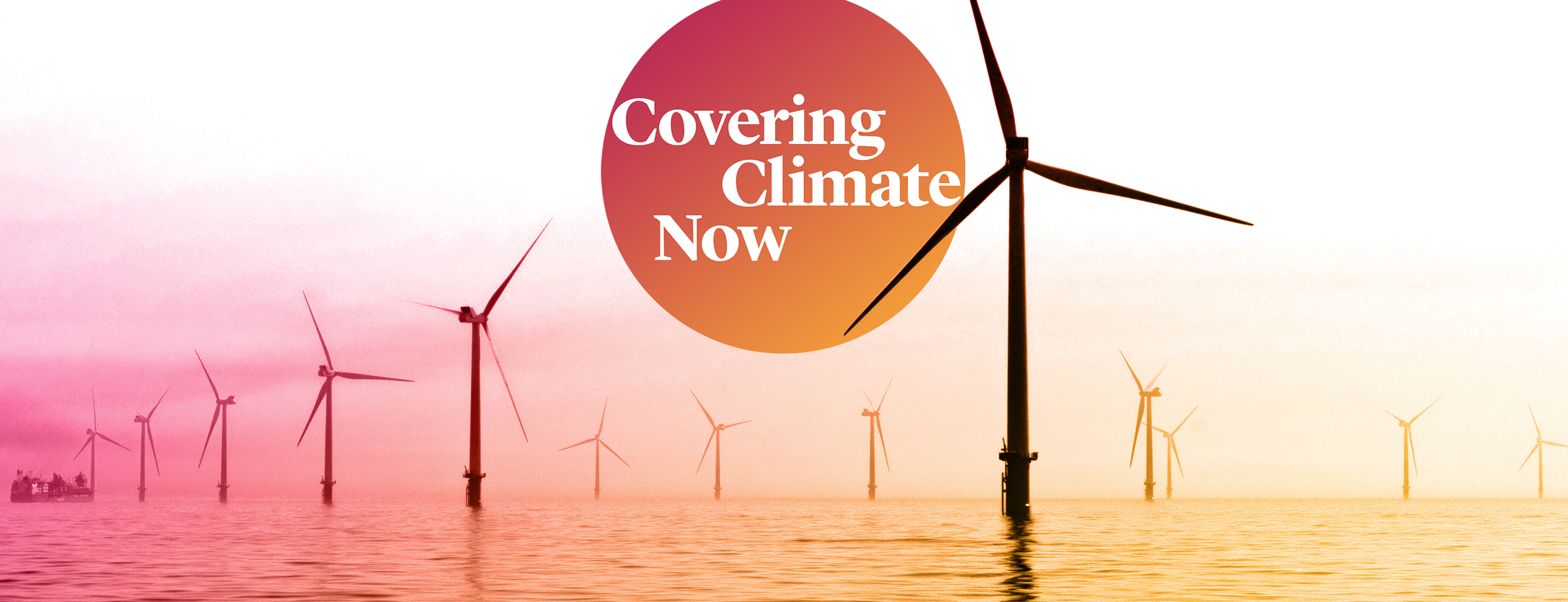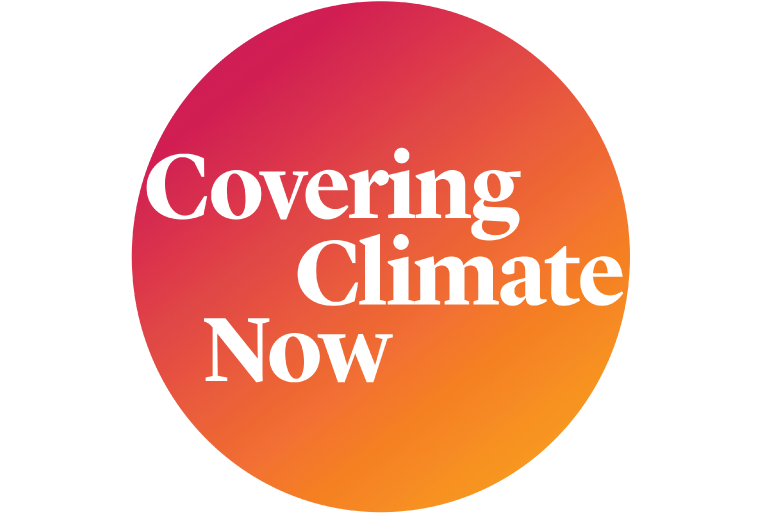This article is adapted from a piece for NBCU Academy and is published here as part of Covering Climate Now, a global journalism collaboration strengthening coverage of the climate story.
AS A YOUNG REPORTER FOR VALLEY PUBLIC RADIO, in Fresno, north of the small farm town where I grew up, I saw firsthand the human impacts of the unfolding climate emergency. Amid a crushing multi-year drought in the state, which lasted from 2011 to 2017, I met farmers whose crops suffered in a warmer climate. I followed firefighters as they exhaustedly battled worsening wildfires. I met families, usually families of color, whose home faucets had run all but dry.
I was reporting for CapRadio, the NPR station covering Sacramento, when protests broke out everywhere following the murder of George Floyd. The connection between climate change and social justice came into sharper focus; my time became split between climate change and America’s racial reckoning. I already knew well that the poor, communities of color, and Indigenous groups are likely to suffer first and worst from the drivers and impacts of climate change—from displacement to housing insecurity to air pollution and its public-health risks. Last year drove the point home: The systems driving climate change—land theft, extractive industries, a growth-based economy that values corporate profit over worker dignity and wellbeing, racist and discriminatory housing practices—are often the very same ones that underlie race and class divides in America and around the world.
As a person of color myself, as this all sank in, I felt the climate story crack open in my mind, revealing a wealth of stories that we journalists have mostly missed for far too long.
Today, I cover climate justice often for KQED in San Francisco. “Climate justice” acknowledges that climate change is inexorably tied to existing inequities. I’ve reported on community preparations for sea level rise, efforts by young activists to press California lawmakers to support a Civilian Climate Corps, and the impacts of drought on wells along the nearby Russian River, among other things.
As a reporter, if you’re going to cover climate change, you need to also report on climate justice. If you’re going to do that, you need to have care in your heart—and maybe also a bit of righteous anger. Here are a few lessons I’ve learned from my own climate justice reporting.
Contrary to popular misconception, reporting on climate justice is not advocacy—it’s basic human respect. The people we interview are paying for the conscious choices of companies, governments, and wealthier individuals. They often lack the means to move beyond the constraints placed on them. Our reporting can help these communities by shining a light and starting hard public conversations.
In my experience, reporting on climate justice is primarily about listening. That means covering more than people’s struggles—a habit of much climate coverage, which often conveys the doom and gloom but overlooks solutions and portrays its subjects only as victims. The people in marginalized or oppressed communities have rich, complex lives that embody struggle, financial problems, and health concerns, yes—but also joy. Our stories must exude this humanity.
People’s climate-change experiences are not isolated; often, if one community is experiencing climate impacts, those experiences are echoed elsewhere in the country or around the world. Whenever possible, our narratives should weave together these shared experiences—which can span city, state, and even national borders—to demonstrate to our audiences the scope of the challenge that climate change presents. After all, humanity is already sharing the burdens of climate change, and those burdens are likely to increase—sooner than we may think.
Any time I’m working on a climate justice story, I first turn to scientists studying the climate impacts relevant to my coverage area—in my case, in California, that might be heat, drought, sea level rise, or wildfires. I do a deep internet search, read studies, and set up interviews on the latest science—essentially, the work any reporter needs to do to be able to connect the dots for themselves, and then for their audience. This is essential at a time when many people, especially in America, remain unaware that an overwhelming majority of scientists agree on the urgent need for action.
I make sure my sources are diverse, taking care to showcase experts who are women, people of color, and LGBTQ+ voices. Doing justice to climate justice stories extends beyond the communities you’re reporting on. Make sure your experts aren’t exclusively outsiders looking in; often, you’ll find that there’s expertise within the community you’re covering. Including it will elevate your credibility—and, more importantly, the power of the human stories you’re working hard to convey.
I meet with the community repeatedly, and give the people most central to the story as much time as I can possibly afford. For example, for a story on rising seas in East Palo Alto, one source began an interview by telling me she doesn’t trust the media. The woman—who’d fled her native Samoa to escape the violent weather there, only to come face-to-face with rising sea levels in the US—said it felt like the reporters she’d encountered before misrepresented, even mutilated, her story. Seeing the distrust in her eyes, I took off my reporter hat and spoke with her instead as if we were good friends. I learned about her history, her concerns, and her aspirations. I also shared some of my story, including how I got into journalism (I came to the decision as a result of prayer), and my motivations for telling her story. After we connected, she opened up.
My interviews are not quick, twenty-minute conversations. They’re spent over tea, walks, community meetings, and (way too many) Zoom calls. Sometimes, I’m there as families weep with each other. Other times, they laugh. The climate emergency is a deeply human story, and so my goal in every interview—whether with a scientist, community member, advocate, or elected official—is to connect.
The climate justice story is often not told well, if it’s told at all. Like the climate crisis itself, the dominant media narratives around climate change have been shaped by the wealthiest nations and the most powerful newsrooms, whose most powerful members are often disproportionately white. Human-caused climate change is the result of systems that fundamentally devalue Earth and many of its inhabitants. Telling climate justice stories means unpacking why the climate crisis is harming the most vulnerable first.
At the end of the day, I try to answer these questions for myself: Have I cared for the people I am writing about, or am I using them for a story? Will this story make a difference for lives, policy, or climate solutions? And, lastly, how did I change in the reporting process? In the best cases, I find that I care more deeply and see the climate emergency in a new way, because I took the time to get to know the people affected by it most.
THE MEDIA TODAY: Simone Biles, Naomi Osaka, and coverage of mental health in sports




